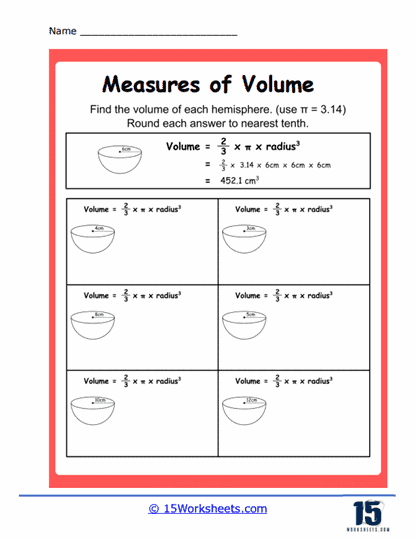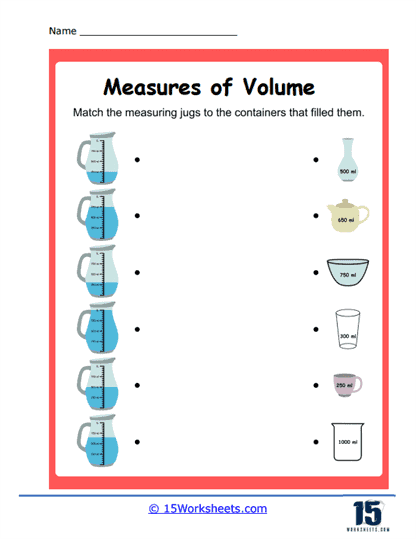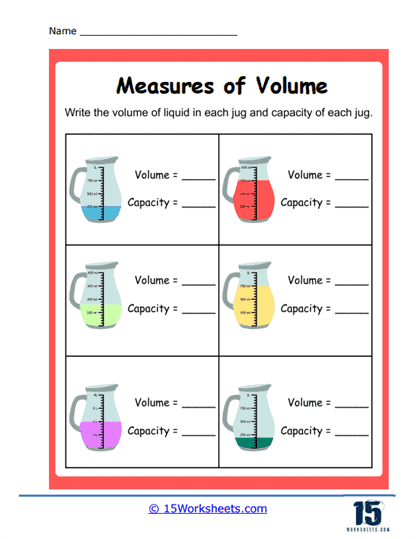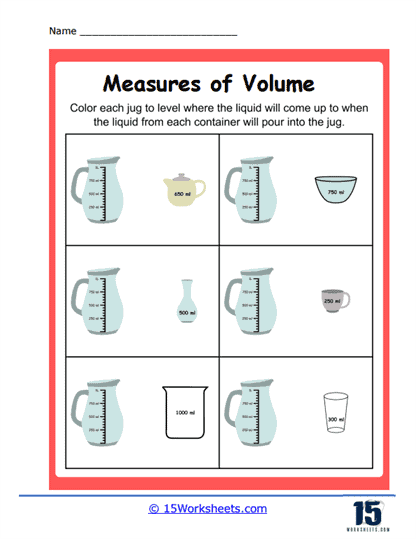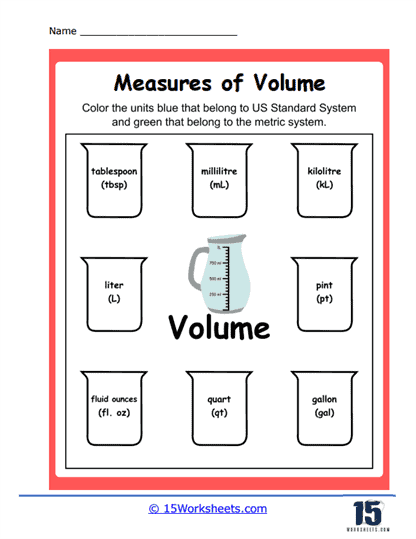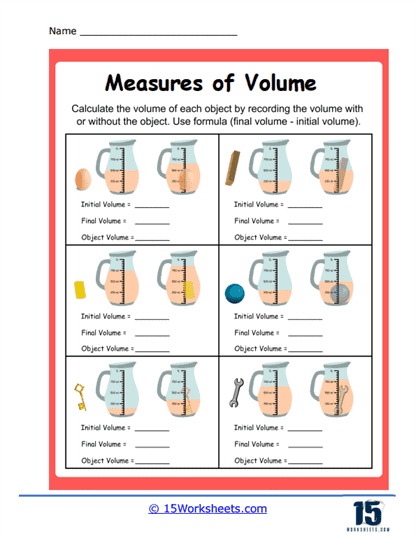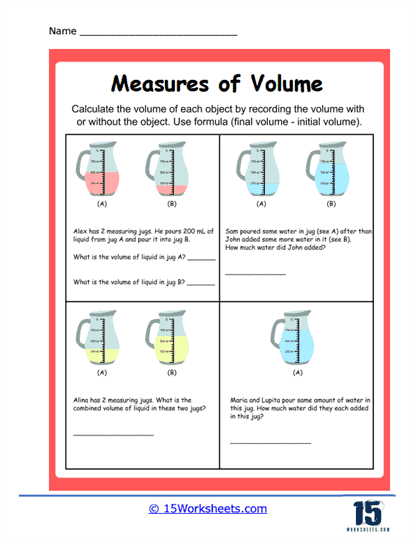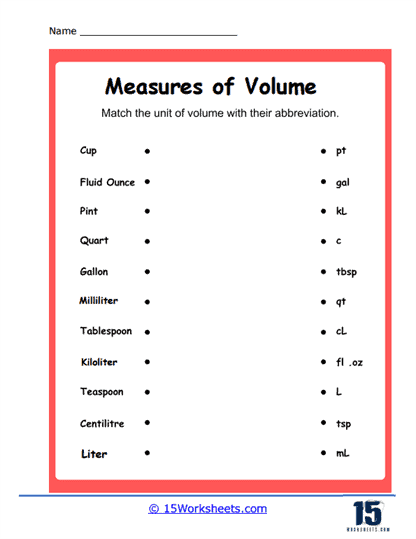Measures of Volume Worksheets
About These 15 Worksheets
Understanding the concept of volume is fundamental in various academic disciplines, from mathematics to science, and even in everyday life activities like cooking. Measures of Volume worksheets are designed for educators to use with their students. It dives deep into the concept that surround the measure of volume – its significance, methods of calculation, and applications in various scenarios.
These worksheets can be used to introduce and reinforce the concept of volume, which refers to the amount of space an object occupies. They explore volume through various shapes, containers, and real-life scenarios. Depending on the age and grade level of the students, these worksheets can range from simple, introductory exercises to more complex problems integrating other mathematical and scientific concepts.
Types of Exercises on These Worksheets
Identifying Units of Volume – Exercises where students match or identify appropriate units of volume, like liters, milliliters, cubic meters, or gallons. This helps familiarize students with standard units of volume and helps them understand when to use each unit.
Basic Volume Calculations – For younger students, this might involve counting cubes to determine the volume of rectangular prisms. For older students, this could mean using formulas to calculate the volume of various shapes, such as cylinders, spheres, or pyramids. These tasks introduce the concept of volume through visualization and lays a foundation for understanding the mathematical principles behind volume calculations.
Volume Displacement – Activities where students predict or measure the change in water level in a graduated cylinder or beaker when an object is submerged. These types of tasks teach the Archimedes’ principle and helps students understand volume in a tangible, hands-on manner.
Comparative Volume Exercises – Problems where students compare the volumes of different shapes or containers and determine which has the most or least volume. This encourages analytical thinking and fosters a deeper understanding of spatial relationships.
Real-world Application Problems – Questions might pose scenarios related to filling or emptying containers, like pools or tanks, or converting one volume unit to another. This demonstrates the practical importance of understanding volume in everyday situations to students.
Capacity and Volume Distinction – Exercises that help students distinguish between the volume of an object and the capacity of a container. This task clarifies the subtle differences between related concepts, ensuring student comprehensive understanding.
Complex Volume Problems – For advanced students, problems might involve combining different shapes, understanding volume in chemical reactions, or exploring the relationship between volume and other measures, like density. This integrates the concept of volume with other scientific and mathematical principles, promoting interdisciplinary learning.
Estimation Exercises – Tasks that ask students to estimate the volume of irregular objects or spaces based on available data. This helps students develop an subtle intuition about spatial relationships and volume, and hones estimation skills.
What Do These Worksheets Teach Students?
Foundational Understanding – These worksheets provide a foundational understanding of what volume is, making abstract concepts more tangible through visualization and hands-on activities.
Mathematical Skills – By learning and applying formulas to calculate volume, students enhance their mathematical proficiency and problem-solving abilities.
Analytical Thinking – Comparative exercises and estimation tasks challenge students to think critically and analytically, skills that are invaluable in many academic and real-world scenarios.
Real-world Relevance – Through application problems, students see the importance and relevance of understanding volume in daily life, from cooking to construction to environmental science.
Interdisciplinary Learning – Especially at advanced levels, volume worksheets delve into areas like physics (density and volume) or chemistry (volume in reactions), emphasizing the interconnectedness of knowledge.
Precision and Accuracy – Given the significance of exact measurements in various fields, these worksheets underscore the importance of accuracy in measurement and calculation.
Visual and Spatial Intelligence – Through visual tasks, like counting cubes or visualizing shape dimensions, students develop spatial intelligence, an essential skill in fields like engineering, architecture, and design.
These worksheets can play an integral role in a student’s academic journey. They transition the abstract concept of volume into tangible, understandable tasks that resonate with real-world applications. Through diverse exercises, students not only grasp the mathematical underpinnings of volume but also learn its significance in daily life and various academic disciplines. With the foundational knowledge and skills acquired from these worksheets, students are well-equipped to explore more complex subjects and problems that hinge on understanding volume.








